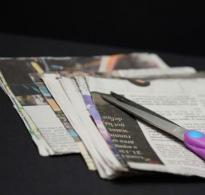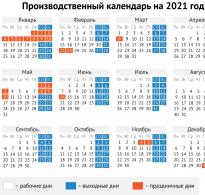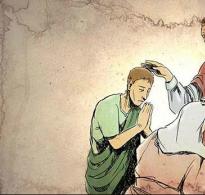IQ testing for adults. Description of the method and Eysenck's IQ test - determining the level of intelligence online. Let's consider the general principle of testing
To complete the test you are given 30 minutes during which you must answer the questions posed. After the specified time has elapsed or if you do not answer all 40 questions, you will automatically be shown the test result in the form of a number - an IQ indicator. Minimum IQ level = 70, maximum 180. Average IQ level ranges from 100 to 120 points. At the end of testing, you can view the correct answers to all questions and compare them with yours.
Answers to tasks consist of one number, letter or word. The dots in the task indicate the number of letters in the missing word. For example (....) means that the missing word has four letters. Answer is written(!) in the text line under the task or answer options in numbers or in capital (small) letters of the Cyrillic alphabet (Russian alphabet) without using spaces(neither at the beginning, nor for division, nor at the end!). Don't stay too long on one task. Remember that towards the end of the series the tasks generally become more difficult.
Intelligence quotient or, as they say in the world, IQ, is a certain quantitative characteristic that establishes the level of a person’s intelligence in relation to the average figure. In a narrower sense, IQ is the ratio of mental age to real (chronological). Determining its level is possible through the use of specialized tests and techniques (we suggest taking the Eysenck IQ test online). At the same time, it is measured and studied as a certain facet of general intelligence.Historical reference
The term “intelligence quotient” was coined by the German scientist Wilhelm Stern in 1912. Having drawn attention to the noticeable shortcomings of mental age (the Binet scale was taken as a basis), he proposed measuring intelligence by dividing mental age by chronological age. And only later (in 1916) IQ was actually used in the Stanford-Binet intelligence scale. Today, everyone is invited to take the Eysenck IQ test online or take part in another way of measuring intellectual level. However, if the first is a generalized work covering many areas of human life, then the rest are nothing more than a pathetic parody. Attempts to compare the results of different tests usually lead nowhere, so experts advise relying on proven IQ techniques - in particular, the Hans Eysenck test. According to its indicators, the minimum intellectual level is 70, the average ranges from 100 to 120 points, the maximum IQ is from 170 and above.Statistics
Repeated scientific research and its analysis allowed foreign scientists to come to the following conclusions: The development of IQ tests was carried out in such a way that their results could be described by a normal distribution with an average IQ = 100. As a result, it turned out that 50% of respondents had an IQ = 90 - 110 , 25% of those tested 110. An IQ value of 70 was equivalent to a diagnosis of mental retardation. Having invited American high school students to take the Eysenck IQ test online, experts found that their IQ advantage was 115. At the same time, it was even higher for excellent students - it ranged from 135 to 140. It is noteworthy that young people under 19 years of age and, conversely, over beyond the age of 60 show lower results.Group differences - gender
Most scientists adhere to the point of view according to which the level of intellectual development of men and women is approximately the same. At the same time, they admit such a feature of men as a spread in IQ - among them there are both geniuses of society, amazing with their intellectual abilities, and mentally retarded individuals. Despite the same range of male and female IQ, there is also a difference in the development of certain areas of it. Moreover, it is absent until the age of 5, and after reaching this age, boys show themselves better in the field of spatial intelligence and manipulation, and girls - in the field of verbal abilities.Group differences - race and nationality
As for the IQ level of representatives of different races, the difference becomes even more noticeable. According to The Bell Curve (1994), the average African American has an intellectual level of 85, Hispanics - 89, people of European descent - 103, Asians - 106, Jews - 113. This gap is often interpreted by pacifists as “scientific racism”, however, according to them It is believed that over time it becomes less and less noticeable. Moreover, the average IQ tends to “grow” over time. Thus, as a result of the Flynn effect, the average IQ of Negroids in 1995 corresponds to the average IQ of Caucasians in 1945. Moreover, genetic factors play absolutely no role here. But social factors, as studies of orphans show, on the contrary, have an impact on IQ level. Thus, American children of African descent raised in a family of white adoptive parents have an ~10% higher intellectual level compared to children raised by blacks. In 3 of 4 tests, no racial differences in intelligence were observed in children 2–5 years old. In one test, white children scored lower on IQ.Take Eysenck's IQ test online
You have 30 minutes to complete the test. Experts advise not to linger on one task and, if difficulties arise, to quickly move on to another. At the same time, according to them, all tasks can be solved. It is enough to show a little more perseverance and the correct answer will be found. Therefore, it is necessary to use only common sense. Please note that the difficulty of the tasks increases as you approach the completion of the text. Anyone can give the correct answers to some questions, but almost no one is able to solve all the test problems in the allotted time.Method of determination level of intelligence by using IQ test- one of the most controversial. According to the author's idea ( G. Eysenck) this test must clearly determine the level of mental abilities of a person. But, in practice, the results obtained using IQ tests turn out to be very controversial.
After all, the level of knowledge and intelligence of the test compiler is taken as the standard, but it is not at all ideal. In addition, preliminary preparation is of great importance. It has been proven that regular training can significantly improve results.
But no matter how you feel about tests, defend your point of view at the interview almost impossible. If the employer is convinced that the test is good, then it is useless to argue with him. Most likely, they will simply not listen to you and will show you the door.
From this we conclude - it's much easier to learn how to pass IQ tests than to prove something at an interview, especially since now there are many online versions this test.
There's really nothing complicated about it. Just a little practice is enough. All tests are based on the same principles that you need to understand.
Let's consider the general principle of testing.
In most cases, you will be asked to answer 40 questions within 30-90 minutes. In this case, simple questions come first, followed by more complex ones. Hence the general rule follows: “ You should not spend more than a third of your total time on the first half of the questions." Those. no need to double-check your answer ten times.
Because of this, the tests contain a lot of tasks with pictures, to which you are asked to add the missing one. Here you need to find the system in the images. There is no universal rule, but there are some general principles.
1) Count the number of similar geometric shapes(squares, triangles, circles, etc.). If one of them is less common than the others, then look for the answer option with it.
2) Check patterns in horizontal and vertical rows of drawings. Perhaps each next picture is rotated at a certain angle, or perhaps its proportions change.
3) Try to break the figure shown into several parts, and check how often these parts are repeated. Compare them with the suggested answers.
Let us separately dwell on two techniques that are often used by IQ test developers.
1) Using Rotate and Transform Operations. Let's say there are three figures in a row: a square, an inclined straight line and a rhombus.
What is the pattern between them? In this case, the inclined straight line symbolizes the operation - a rotation of 45 degrees. Those. if the first drawing (square) is rotated 45 degrees, you get a rhombus.
2) Overlaying shapes. We could go on and on here, but test writers often use “tricky” overlap rules. Take a look at the picture.

How is the third obtained from the first two figures? In this case, the rule was used - if two lines overlap each other, they disappear. Therefore, a rhombus has no diagonal.
The examples could be continued, but there is little point in this. The main principle is regular training. The developers' imagination is limitless, but the general rules do not change. Therefore, the more different Eysenck's IQ tests you pass, the better your results will be. It is not necessary to buy expensive books on psychology for this; now there are many online IQ tests.
You can start with this not very difficult IQ test.
With a little practice, any IQ testing will only increase your chances of successfully passing an interview.
1. Intelligence test by G. Eysenck (iq test) - page No. 1/10
1. G. Eysenck Intelligence Test (IQ Test).
Test appointment.
The technique is intended to assess intellectual abilities and determine the extent to which the subject has non-standard thinking. For the study of people from 18 to 50 years old with at least secondary education.
Instructions for the test.
You have exactly 30 minutes to complete the test. Don't stay too long on one task. Perhaps you are on the wrong path and it is better to move on to the next task. But don't give up too easily; Most tasks can be solved if you show a little persistence. Continue to think about the task or give up trying and move on to the next one - common sense will tell you. Remember that towards the end of the series the tasks generally become more difficult. Any person is able to solve part of the proposed tasks, but no one is able to cope with all the tasks in half an hour.
The answer to the task consists of one number, letter or word. Sometimes you have to choose from several possibilities, sometimes you have to come up with the answer yourself. Write your answer in the space indicated. If you are not able to solve the problem, you should not write the answer at random. If you have an idea, but you are not sure about it, then write down the answer anyway.
The test does not contain “tricky” tasks, but you always have to consider several solutions. Before you start making a decision, make sure you understand exactly what is required of you. You will waste your time if you take on a solution without understanding what the problem is.
Notes:
The dots indicate the number of letters in the missing word. For example, (. . . .) means that the missing word has four letters.
To solve some tasks you will need to use a sequence of letters of the Russian alphabet without the letter “ё”.
Test material.
1. Select the desired shape from the four numbered ones.

2. Insert a word that would serve as the end of the first word and the beginning of the second.
OBY (. . .) KA
3. Solve anagrams and eliminate the extra word.
DMONCEA
4. Fill in the missing number.

5. Fill in the missing word.
HOOK (ROSA) CLASH
GARAGE (. . . .) TOBACCO
6. Fill in the missing number.
7. Continue the series of numbers.
8. Solve anagrams and eliminate the extra word.
SLOT
LEXOR
9. Select the desired figure from the numbered ones.
 10. Select the desired shape from the six numbered ones.
10. Select the desired shape from the six numbered ones.

11. Insert the missing letter.
12. Insert a word that would serve as the end of the first word and the beginning of the second.
ME (. . .) OLAD
13. Fill in the missing number.
 14. Fill in the missing number.
14. Fill in the missing number.
8 5 14
15. Fill in the missing number.
16. Fill in the missing letters.

17. Select the desired shape from the six numbered

18. Select the desired figure from the numbered ones.

19. Fill in the missing number.
20. Fill in the missing number.
21. Fill in the missing word.
FLASK (ALT) TIN
JOINT (. . . .) MIRAGE
22. Insert a word that would serve as the end of the first word and the beginning of the second.
PRIK (. . .) ya
23. Solve anagrams and eliminate the extra word.
NUSSC
24. Insert a word that would mean the same as the words outside the brackets.
HAND (. . . .) BUCKLE
25. Fill in the missing letter.
G Z L
26. Fill in the missing letters.

27. Select the desired shape from the six numbered ones.

28. Select the desired figure from the numbered ones.

29. Select the desired shape from the six numbered ones.

30. Fill in the missing word.
BOOK (STORK) SALAD
THRESHOLD (...) OMELETE
31. Insert a word that would mean the same as the words outside the brackets.
CARD GAME (...) THREADED ROD
32. Fill in the missing number.
33. Fill in the missing word.
TRAY (TREASURE) BOAT
OLYMPUS (...) BOAT
34. Solve anagrams and eliminate the missing word.
TIVONKR
RAKYSH
35. Fill in the missing letter and the missing number.

36. Insert a word that would mean the same as she does outside the brackets.
BAY (...) PART OF THE FACE
37. Fill in the missing word.
PIE (FIELD) TEAR
MARKET (...) SIEGE
38. Select the desired shape from the six numbered

39. Select the desired shape from the six numbered

40. Select the desired shape from the four numbered

Key to the test.
TEA.
SUITCASE. (All other words denote utensils: plate, spoon, cup).
11. (Subtract the number on the floor from the sum of the numbers on the windows.)
TOAD. (The first letter of a missing word is the last letter of the preceding word; the second letter of a missing word is the fourth letter of the preceding word; the third letter of a missing word is the third letter of the subsequent word; the fourth letter of the missing word is the fourth letter of the subsequent word).
21. (Add all the numbers outside the brackets.)
3. (Each number is obtained by adding 2 to the previous one and dividing the result by 2: 4+2=6; 6:2=3.)
DOUGH. (All other words denote home furnishings: table, sofa, armchair.)
6. (Circle, triangle and square can be either an outer or an inner figure and can be black, white or shaded. Each of these features occurs only once in a row or column).
5. (There are three figures, differing in the way the line is drawn inside the rectangle, and three small figures inside - a cross, a diamond and a black spot. On each rectangle there are two such figures.)
I. (The letters are arranged in reverse alphabetical order, alternately through two to a third and through three to a fourth.)
SHOCK.
54. (The numbers in the left half of the circle are three times larger than the opposing numbers in the right half of the circle.)
11. (In each row, the third number is the sum of half the first number with double the second.)
27. (The number in brackets is the difference between the numbers outside the brackets!)
M and I. (The word “doubt”, read counterclockwise.)
2. (The circle can be without lines, it can have a horizontal or vertical line. And small circles inside the circle can be in one of three positions. In addition, they have different shading.)
2. (The third figure of each horizontal row consists of those elements of the figures of its row that are not common to them.)
18. (Squaring the numbers 2, 3, 4, 5 respectively, adding 2 each time.)
76. (Twice the sum of the numbers outside the brackets.)
LEATHER. (The first letter of a missing word is the last letter of the preceding word; the second letter of a missing word is the second letter of the preceding word; the third letter of a missing word is the fifth letter of the subsequent word; the fourth letter of the missing word is the fourth letter of the subsequent word.)
LAD.
SKUNK. (The remaining words indicate types of vessels: barge, yacht, boat.)
BRUSH.
S. (Rows are constructed from letters of the Russian alphabet, respectively, separated by 2, 3 and 4 letters).
E and E. (The word UNITY, read clockwise.)
2. (There are three types of main figures, each of which has either a +, an arrow, or an x.)
1. (There are three types of flowerpots, three types of stems and three flower shapes. The flowerpot can be white, black or shaded. Each of these features occurs only once in a row or column.)
1. (Spikes pointing outward are considered +1; spikes pointing inward are -1. In each horizontal row, the last figure is considered the sum of the two previous figures: 4-2=2, -1+5=4, 2 + 2=4.)
GROTTO. (The first and second letters of the missing word are, respectively, the fifth and third letters of the preceding word, and the third and fourth letters of the missing word are, respectively, the first and fifth letters after the following word.)
SCREW.
64. (Cube the numbers 1,2,3 and 4 respectively.)
PORT. (The first and second letters of the missing word are the fifth and first letters of the preceding word, respectively, and the third and fourth letters of the missing word are, respectively, the fifth and third letters of the subsequent word.)
TUESDAY. (The remaining words indicate parts of the house: wall, roof, window.)
F / 7. (The letters are in alphabetical order, one after another, alternately in the numerator and denominator. The numbers corresponding to the serial number of these letters in the alphabet are arranged in a similar way.)
LIP.
DEW. (The first and second letters of the missing word are the first and fourth letters of the previous word, respectively, and the third and fourth letters of the missing word are the second and third letters of the subsequent word, respectively.)
1. (In each row and in each column there are three different types of balls, three head shapes, three boot shapes and three hand positions. Those shapes and positions that are not in the first two pictures of the third row should be in the missing picture.)
6. (There are three styles of skirts, three hand positions, three types of shoes.)
1. (The second and third shapes of each row contain one of the elements inside the first shape, rotated 90 degrees.)
 Plot the number of correctly solved problems on the horizontal line of the corresponding graph. Then draw a vertical line until it intersects with the diagonal line. From the intersection point, draw a horizontal line to the left. The point on the vertical axis corresponds to your IQ (intelligence quotient). The most reliable and reliable results indicating your abilities are obtained in the range from 100 to 130 points; outside these limits, the assessment of results is not reliable enough.
Plot the number of correctly solved problems on the horizontal line of the corresponding graph. Then draw a vertical line until it intersects with the diagonal line. From the intersection point, draw a horizontal line to the left. The point on the vertical axis corresponds to your IQ (intelligence quotient). The most reliable and reliable results indicating your abilities are obtained in the range from 100 to 130 points; outside these limits, the assessment of results is not reliable enough.
2. Brief Orientation Test (CAT Test by V.N. Buzin, E.F. Vanderlik).
Test appointment.
Determination of the integral indicator of general abilities.
Instructions for the test.
You are offered several simple tasks. Read this page carefully and do not turn it over without command.
Get acquainted with the sample tasks and the correct answers to them:
"Fast"
1 – heavy, 2 – elastic, 3 – secretive, 4 – light, 5 – slow.
Petrol costs 44 cents per liter. How much does 2.5 liters cost?
Minor minor. These two words are:
1 – similar, 2 – opposite, 3 – neither similar nor opposite in meaning.
The test that will be offered to you now contains 50 questions. You are given 15 minutes to complete the test. Answer as many questions as you can and don't spend a lot of time on one question. If necessary, use paper for writing. If you don't understand, ask now. Your questions will not be answered while the test is running.
After the command “Start!” turn the page and start working.
After 15 minutes, on command, immediately stop performing tasks, turn the page and put down the pen.
Focus. Place the pen to your right. Wait for the command.
Let's start!
Test material.
The eleventh month of the year is:
1 – October, 2 – May, 3 – November, 4 – February.
"Severe" is the opposite in meaning of the word:
1 – sharp, 2 – strict, 3 – soft, 4 – hard, 5 – unyielding.
Which of the following words is different from the others:
1 – definite, 2 – doubtful, 3 – confident, 4 – trust, 5 – faithful.
Reply Yes or No.
Abbreviation "A.D." means: "AD" (new era)?
Which of the following words is different from the others:
1 – sing, 2 – call, 3 – chat, 4 – listen, 5 – speak.
Word "immaculate" is the opposite in meaning of the word:
1 – pure, 2 – obscene, 3 – incorruptible, 4 – innocent, 5 – classic.
Which of the following words refers to the word "chew" How sense of smell And nose:
1 – sweet, 2 – tongue, 3 – smell, 4 – teeth, 5 – clean
How many of the following pairs of words are completely identical?
Fielder E.H. Fielder E.N.
Connor M.G. Conner M.G.
Woesner O.W. Woerner O.W.
Soderquist P.E. Soderquist B.E.
"Clear" is the opposite in meaning of the word:
1 – obvious, 2 – obvious, 3 – unambiguous, 4 – distinct, 5 – dim.
An entrepreneur bought several used cars for $3,500 and sold them for $5,500, earning $50 per car. How many cars did he sell?
Words "knock" And "drain" have:
Three lemons cost 45 cents. How much does 1.5 dozen cost?
How many of these 6 pairs of numbers are exactly the same?
66986 69686
834426 834426
7354256 7354256
61197172 61197172
83238224 83238234
"Close" is the opposite of:
1 – friendly, 2 – friendly, 3 – stranger, 4 – native, 5 – different.
Which number is the smallest:
6 0,7 9 36 0,31 5 ?
Place the words below in order to make the correct sentence. Write down the last two letters of the last word as your answer.
Which of the five pictures below is most different from the others?

Two fishermen caught 36 fish. The first one caught 8 times more than the second one. How much did the second one catch?
"Rise" And "revive" have:
1 – similar meaning, 2 – opposite, 3 – neither similar nor opposite.
Put the words below in order to make a statement. If it is correct, then the answer will be P, if incorrect - N.
Two of the phrases below have the same meaning, find them:
1. Keep your nose to the wind.
2. An empty bag is not worth it.
3. Three doctors are no better than one.
5. Seven nannies have a child without an eye.
What number should replace the "?" sign:
73 66 59 52 45 38 ?
The length of day and night in September is almost the same as in:
1 – June, 2 – March, 3 – May, 4 – November.
Let's assume that the first two statements are true. Then the final one will be:
All leading people occupy major positions.
Some party members hold major positions.
A train travels 75 cm in 1/4 s. If he drives at the same speed, how far will he travel in 5 s?
Assuming that the first two statements are true, then the last one:
1 – true, 2 – false, 3 – uncertain.
Masha is younger than Zhenya.
Borya is younger than Zhenya.
Five half-kilogram packs of minced meat cost $2. How many kilograms of minced meat can you buy for 80 cents?
spread out And stretch. These words:
1 – similar in meaning, 2 – opposite, 3 – neither similar nor opposite.
Divide this geometric figure into two parts with a straight line so that by adding them together you can get a square:

Let's assume that the first two statements are true. Then the last one will be:
1 – true, 2 – false, 3 – uncertain.
Masha greeted Dasha.
Sasha did not greet Dasha.
The $2,400 car was marked down 33 1/3% during the seasonal sale. How much did the car cost during the sale?
Three of the five figures need to be connected in such a way as to form an isosceles trapezoid:

The dress requires 2 1/3m. fabrics. How many dresses can you make from 42 m?
The meanings of the following two sentences:
The more doctors, the more diseases.
Increase And expand. These words:
1 – similar, – opposite, 3 – neither similar nor opposite.
The meaning of two English proverbs:
1 – similar, 2 – opposite, 2 – neither similar nor opposite.
Don't put all your eggs in one basket.
The grocer bought a box of oranges for $3.60. There were 12 dozen of them in the box. He knows that 2 dozen will go bad before he sells all the oranges. At what price does he need to sell the oranges to make a profit of 1/3 of the purchase price?
Claim And pretentious. These words according to their meaning:
1 – similar, 2 – opposite, 3 – neither similar nor opposite.
If a pound of potatoes cost $0.0125, how many kilos could you buy for 50 cents?
One of the members of the series does not fit with the others. What number would you replace it with:
1/4 1/8 1/8 1/4 1/8 1/8 1/4 1/8 1/6.
Reflected And imaginary. These words are:
1 – similar, 2 – opposite, 3 – not similar. nor the opposite.
How many acres is a plot 70 m long and 20 m wide?
The following two phrases by meaning:
1 – similar, 2 – opposite, 3 – neither similar nor opposite.
Good quality comes from simplicity, bad quality comes from complexity.
A soldier, shooting at a target, hit it in 12.5% of cases. How many times must a soldier fire to hit one hundred times?
One of the members of the series does not fit with the others. What number would you put in its place:
1/4 1/6 1/8 1/9 1/12 1/14?
Three partners in a joint stock company (JSC) decided to divide the profits equally. T. invested $4,500 in the business, K. – $3,500, P. – $2,000. If the profit is $2,400, how much less profit will T receive than if the profit were divided in proportion to the contributions?
Which two of the following proverbs have a similar meaning:
1. Strike while the iron is hot.
2. Alone in the field is not a warrior.
3. The forest is being cut down, the chains are flying.
4. All that glitters is not gold.
5. Judge not by appearance, but by deeds?
The meaning of the following phrases:
1 – similar, 2 – opposite, 3 – neither similar nor opposite.
There is no big deal without losses.
Which of these figures is most different from the others?

A printed article has 24,000 words. The editor decided to use two font sizes. When using a large font, 900 words fit on a page, and a smaller font - 1200. The article should take 21 full pages in the magazine. How many pages should be printed in smaller font?
Interpretation of test results
It is advisable to begin analyzing the results by determining the level of general mental abilities. To do this, the number of correctly solved problems (IP) is correlated with the level scale.
|
The value of the IP indicator |
Level of general mental abilities |
|
13 or less |
short |
|
14-18 |
below the average |
|
19-24 |
average |
|
25-29 |
above average |
|
30 and more |
high |






